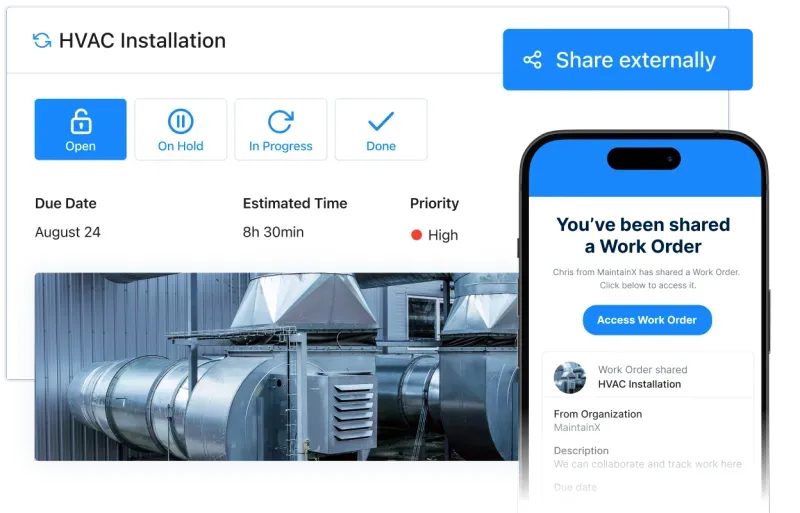
Whether setting New Year’s resolutions, few understand the difference between goals vs. objectives. Business Consultant Dan Feliciano told Fast Company that it drives him crazy:
“I expect most business people, especially senior-level executives, to use the terms goal and objective correctly,” he said. “Perhaps it’s my deeply held belief that in order for organizations to achieve success, they have to be able to effectively communicate their goals and objectives and that these goals and objectives will be cascaded down through the organization.”
When we first realized more than 2,000 people turn to Google each month for information about the difference between “goals vs. objectives,” we were surprised.
As it turns out, goals and objectives serve two very different purposes, which are essential to getting from point A to point B!
This article will explain the difference between the often misused terms. We’ll also provide some quick tips on how to increase the likelihood of achieving both goals and objectives in the workplace. After reading, you’ll appreciate the difference between goals and objectives.
Goals vs. Objectives: What’s the Difference (and Does it Matter?

The key to turning a business plan into a successful reality? Reverse engineer the big picture into measurable objectives broken into specific tasks. Let’s start by challenging our assumption of what it means to set a goal.
What Are Goals?
Goals are broad statements of desired results we want to happen over a specific period. The time frame for accomplishing goals is typically long-term. However, this can mean two months or two years, depending on the complexity of obstacles standing in the way.
Examples of business goals include:
- Boost profit margins.
- Reduce energy usage.
- Improve brand recognition.
- Increase customer retention.
- Reduce equipment downtime.
Notably, goals do not describe methods of achievement. Objectives, on the other hand, do describe the events required to achieve goals.
What Are Objectives?
Objectives are benchmarks we want to reach on the road to achieving goals. Thus, the time frame for achieving business objectives is shorter than project goals.
Examples of business objectives include:
- Reduce operating costs by 10 percent in 2021.
- Switch 75 percent of residential units to energy-efficient appliances in 2 years.
- Increase Facebook ad spend by 25 percent in Q3.
- Decrease CAC by 20 percent in 6 months.
- Launch MaintainX CMMS to automate PMs.
In summary, goals are the ultimate targets you want to hit, while objectives are the quantifiable actions that take you there.
Goals provide direction, highlight priorities, and support effective decision-making. And objectives offer action steps, measure progress, and deliver “quick wins.”

What about Those SMART Goals?
No discussion on goals is complete without mentioning “SMART goals.” At some point in your career, you may have heard about the importance of setting them.
SMART stands for Specific, Measurable, Achievable, Realistic, and Timely. If you’re thinking the description sounds like how we’ve described objectives thus far, you would be correct! Technically speaking, these kinds of strategic goals are objectives.
Characteristics of SMART Goals:
- Specific: Clearly articulate your objectives. Challenge yourself to get specific by asking the five Ws: What are you looking to achieve? Why do you want to achieve it? Who will be involved? Where will it happen? When should it happen?
- Measurable: Establish criteria for measuring progress. Measurable objectives answer the questions like: How will you validate success? What are your KPIs?
- Achievable: Avoid objectives that are exceedingly difficult or beyond your control. You can determine whether a desire is possible or not by evaluating the resources, capabilities, and skills at your disposal. With that said, don’t rule something out just because you can’t find examples of past achievements. Someone always has to go first!
- Realistic: This checkbox is a bit redundant. Perhaps, Doran and company were too attached to the SMART acronym to drop it when they repeated themselves with the letter “r.” However, one might also associate “r” with relevancy. Are your objectives relevant to your organization’s mission statement, vision, and goals?
- Timely: Finally, every initiative needs a timeline for completion. This includes a starting date and a deadline, so team members work with gentle urgency.
In a nutshell, setting SMART goals has worked for countless business leaders around the world. The SMART criteria can serve as a guidepost for developing the kind of detailed planning that gets results.
Goals vs. Objectives: How to Track Progress with KPIs

Achieving any company goal, short-term or long-term, begins with breaking it into specific actions. Ideally, you want to link each objective with its own time-bound key performance indicator (KPI). The less ambiguity around what it means to reach a benchmark, the better.
Meaning of KPIs
KPIs are measurements used by organizations to assess progress. Most businesses track some form of metrics for a simple reason: it’s hard to know what’s working and what isn’t otherwise!
Organizations of all types, large and small, engage in several tasks simultaneously to meet various objectives. With so much happening at once, it’s easy to overlook strategies, procedures, and processes that may have decreased in effectiveness over time.
Relevant KPIs help managers finetune standard operating procedures, strengthen departmental programs, and optimize budgetary decisions. So, which KPIs should you choose? While some measurable steps are easy to track, it’s not always obvious which ones are worth monitoring.
Types of KPIs
It’s important to differentiate between outcome KPIs and driver KPIs when analyzing specific objectives.
1. Outcome KPIs
Also referred to as lagging indicators, outcome KPIs are ideal for measuring objectives when you don’t necessarily know which actions will improve performance.
This type of KPI measures the impact of both intermediate and end results. For example, say a plant achieves a 10 percent decrease in equipment downtime. Downtime refers to the amount of time a system or machine remains inoperable.
The plant’s accomplished objective could be the result of:
a) performing regularly scheduled PMs on its five most critical machines,
b) digitizing new standard operating procedures,
c) automating spare parts management, or
d) several other variables.
In this situation, downtime is a KPI that tracks progress toward a plant’s goal to “produce X number of widgets per hour. Thus, outcome KPIs are ideal for measuring situations where you don’t know exactly which drivers will impact desired outcomes.
2. Driver KPIs
Alternatively, driver KPIs, also known as leading indicators, are great when you already know the action will yield your desired result. Keeping with the existing example, our plant manager knows that equipment idle times negatively impact production.
For this reason, they track Mean Time to Repair (MTTR) for the plant’s most critical machinery. As team members monitor the average time it takes to restore equipment to functionality, they can look for bottlenecks that keep technicians from fixing equipment faster.
How to Excel with KPIs
Here are some tips to maximize your success with KPIs:
- Only Choose a Few: It’s impossible to track everything at once. So, only choose the enterprise or small business metrics that will most clearly illustrate progress for your desired objectives. What makes an effective KPI? It should be easily quantifiable, scalable, and within your control. Once you reach your first milestones, you can integrate additional KPIs into the mix.
- Involve Team Members: You can only measure your KPIs if you have someone directly responsible for them. Choose knowledgeable workers to track, analyze, and report on the KPIs assigned to them. Not only does this empower team members to assume greater responsibility for their roles, but it relieves management from being the sole juggler of goal and objective assessments.
- Develop Data Management Systems: You can use spreadsheets to track, monitor, and report your KPIs. But use digital solutions, such as MaintainX CMMS, whenever possible. You’ll be able to track your KPIs faster, generate insightful reports, communicate better with your employees, and save time.
- Standardize Review Processes: Lastly, create a management SOP to periodically review your data. Depending on the complexity of your organization and what is at stake, you may want to schedule your review monthly, quarterly, or yearly. During this time, you can brainstorm how to tweak your game plan to improve your aim.
However, exercise caution not to turn your KPIs into targets. At the end of the day, they are only metrics to help measure progress on the road of goals vs objectives. Focus too much on the numbers, and you may lose sight of the variables responsible for generating them.
Automate Processes with MaintainX
Congratulations—you now know the difference between goals and objectives. Whether you choose to keep this knowledge to yourself or use it to impress others is your call.
One of the easiest ways to get where you want to go faster is to automate your team’s workflows. Identify, standardize, and automate routine tasks with software so employees can focus on what matters most. Without workflow automation and specific targets, employees often waste time on low-value tasks that don’t move the needle.
Are you an operational manager seeking to streamline your maintenance department’s work order, asset management, and supply chain systems? If so, we invite you to try MaintainX. Our customers save an average of 20 managerial hours per week using our mobile-friendly platform.
FAQs

Caroline Eisner is a writer and editor with experience across the profit and nonprofit sectors, government, education, and financial organizations. She has held leadership positions in K16 institutions and has led large-scale digital projects, interactive websites, and a business writing consultancy.




.jpeg)















